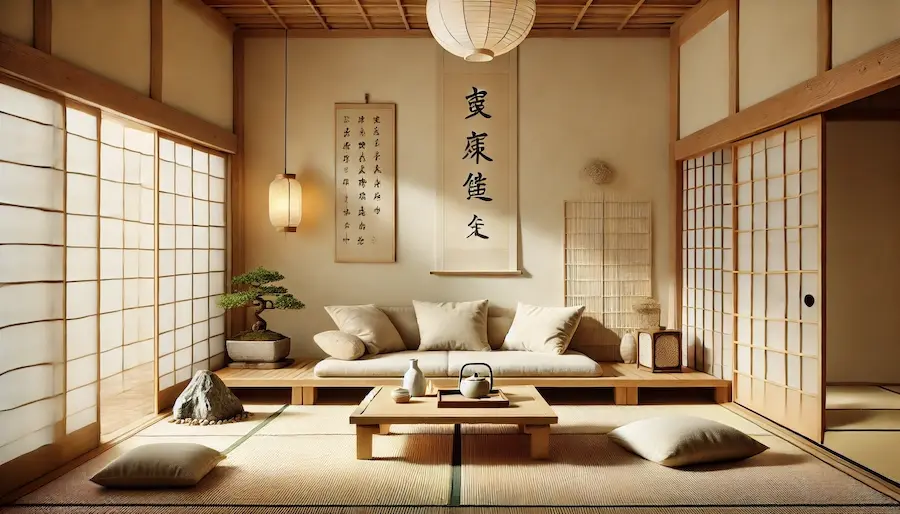A Japanese Zen living room embodies tranquility and simplicity, drawing inspiration from traditional Japanese design principles to create a serene and harmonious space.
History and Origins of Japanese Zen Design
Japanese Zen design is deeply rooted in the principles of Zen Buddhism, emphasizing minimalism, natural materials, and a strong connection with nature. This aesthetic seeks to create environments that promote peace and mindfulness, reflecting the Japanese cultural appreciation for simplicity and the beauty of imperfection, known as wabi-sabi.
Key Features of a Japanese Zen Living Room
- Natural Materials: Incorporate elements such as wood, bamboo, and stone to establish a connection with nature. These materials bring warmth and texture to the space, enhancing its organic feel.
- Minimalist Aesthetics: Embrace simplicity by selecting essential furnishings and keeping decor to a minimum. This approach fosters a clutter-free environment conducive to relaxation and meditation.
- Neutral Color Palettes: Utilize soft, earthy tones like beige, soft greens, and browns to create a calming atmosphere. These colors reflect the natural world and contribute to the room’s serene ambiance.
- Shoji Screens: Incorporate traditional Japanese sliding screens made of translucent paper and wooden frames to divide spaces subtly, allowing light to filter through and enhancing the room’s tranquil quality.
- Low Furniture: Opt for low-profile furniture, such as floor cushions or low wooden tables, to create a grounded and intimate setting that encourages relaxation.
Applications of Japanese Zen Design in Living Rooms
- Indoor Plants: Introduce greenery like bonsai trees or bamboo plants to bring elements of nature indoors, enhancing the room’s peaceful ambiance.
- Natural Light: Maximize natural light through large windows or strategically placed mirrors to create an open and airy environment. Natural light plays a crucial role in Japanese design, fostering a connection with the outdoors.
- Tatami Mats: Use traditional Japanese flooring mats made of rice straw to add authenticity and comfort underfoot, reinforcing the Zen aesthetic.
Considerations When Designing a Japanese Zen Living Room
- Clutter-Free Environment: Maintain a tidy space by minimizing unnecessary items, as clutter can disrupt the room’s tranquility. Incorporate hidden storage solutions to keep essentials organized and out of sight.
- Balance and Harmony: Strive for a harmonious arrangement of furniture and decor, ensuring that each element complements the others to create a cohesive and peaceful environment.
- Connection with Nature: Enhance the room’s Zen quality by incorporating natural elements and ensuring a seamless transition between indoor and outdoor spaces, if possible. This connection fosters a sense of calm and well-being.
Conclusion
Designing a Japanese Zen living room involves embracing minimalism, natural materials, and a harmonious layout to create a serene and tranquil space. By incorporating these elements thoughtfully, you can transform your living area into a peaceful retreat that reflects the timeless beauty of Japanese design principles.
